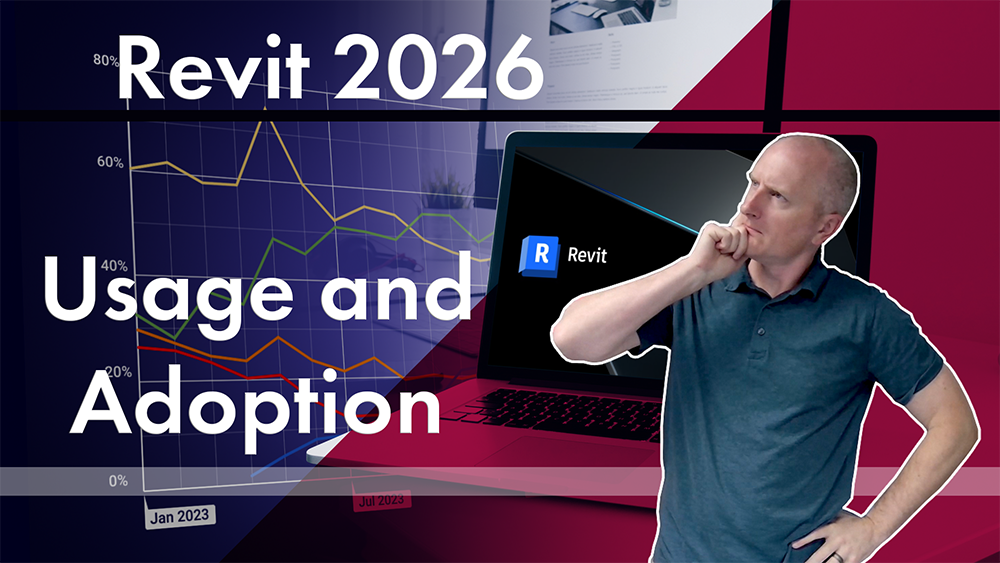Choosing a Revit version is not always a personal choice for electrical engineers. In many cases, the architect’s decision drives project requirements, which in turn shape what engineering teams must install and maintain. To shed light on how quickly the industry moves from one version to the next, we analyzed anonymized usage data from ElectroBIM, our electrical add-in for Revit. The dataset covers thousands of commands executed by practicing engineers between January 2023 and the present.
Adoption Trends Over Time
Revit 2020 and 2021: By early 2023, both versions had already begun to decline. Three-and-a-half years after release, Revit 2020 still appeared on a handful of legacy projects, but its share kept shrinking month over month. Revit 2021 followed an almost identical curve, lagging by one year.
Revit 2022: Usage peaked about 18 months after launch, then started to recede. Even in decline, it remained more popular than in 2020 and 2021 at comparable ages.
Revit 2023: Adoption rose steadily for its first year, hit a high point at roughly 24 months, and then tapered off in line with historical patterns.
Revit 2024 and 2025: These versions show the familiar S-shaped curve of gradual uptake, pronounced peak, and early decline. Revit 2024 appears to have enjoyed slightly higher peak usage than Revit 2023, while Revit 2025 is tracking a bit lower than 2024 did at the same age.
Revit 2026: With only two months of data, it is too soon to draw firm conclusions, but early adoption is like prior releases.
Adoption Trends Since Release
Plotting each version against months since launch reveals a consistent lifecycle:
- Ramp-up (0–12 months). Early adopters begin migrating projects once the version proves stable.
- Peak popularity (12–24 months). A critical mass of firms standardizes on the new version, making it the de facto industry baseline.
- Decline (24 months onward). Projects wrap up, new work starts on newer versions, and usage gradually falls.
Comparing versions at the same lifecycle point shows minor differences in peak height, but the overall shape remains remarkably stable.
What This Means for Your Projects
- First year on a new version: If you begin a project within 12 months of release, you are operating ahead of the pack.
- Second and third years: These are the sweet-spot years when a version becomes the norm. Compatibility issues are minimal, and most consultants will already have it installed.
- Fourth year and beyond: Running a version that is three or more releases behind is a sign that the project is nearing completion or that the team prefers to avoid the cost of migration.
Key Takeaways
- Peak usage for every Revit release consistently arrives about two years after launch.
- Two consecutive versions (the most recent and the previous) represent the “standard” range where most live projects sit.
- Versions more than three releases old occupy a long tail of legacy jobs that are winding down.
- Architects drive upgrade timing. Electrical engineers can use these benchmarks to gauge how far ahead or behind their projects are relative to industry norms.
The Bottom Line
Revit adoption follows a predictable rhythm. Understanding that rhythm helps engineering teams plan upgrades, anticipate coordination hurdles, and set realistic expectations with architects and owners. Whether you prefer to innovate early or wait for widespread stability, aligning your strategy with the broader lifecycle can reduce friction and keep your projects on track.
Join Our Free Webinar
December 16, 2025 • 1:00 ET / 10:00 PT
“Create Single-Line Diagrams in Revit Without Late Nights or Change Orders”

